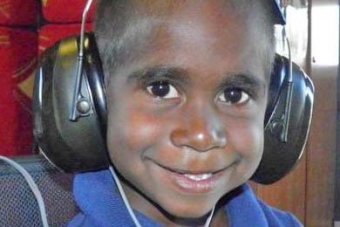The Aboriginal Health Council of Western Australia has described being hit by a double whammy after finding out about a 50 per cent state budget cut to Indigenous programs.
Budget papers show that funding for Aboriginal-run medical services has halved from more than $30 million to less than $16 million.
The council’s chair Michelle Nelson-Cox said the cut came as a shock.
At the moment we’re in limbo, we don’t know how much is going to be affected.
Michelle Nelson-Cox
“The disappointing situation is we weren’t advised that we were potentially at risk of losing some of our core funding,” she said.
“To date we haven’t had any notice as to what programs are going to be impacted by the funding cuts.”
Ms Nelson-Cox said services were being forced to make changes, including remodelling the way in which people were treated.
“[We’re] making adjustments with shortcuts in what we can deliver and what we’re unable to deliver and how we can accommodate those needs, but at the moment we’re in limbo, we don’t know how much is going to be affected,” she said.
Ms Nelson-Cox said the council did not want primary health care provision to be affected.
“It’s a bit hard to adjust some of the programs … to deliver holistic primary health care,” she said.
Ms Nelson-Cox also said workers were concerned about job security, and whether the needs of clients could be met.
She said the sector had already been trying to deal with changes in funding brought in by the Federal Government.
“We’ve been penalised through the Commonwealth and now we’re penalised through the State Government,” she said.
Funding to be found for ‘good’ programs
State Health Minister Kim Hames has confirmed there has been an effective 50 per cent cut to the allocation for Aboriginal health services.
But he has told Parliament the state budget does not really reflect what the final funding figure is likely to be.
Dr Hames has referred to a review of funding which was conducted by Professor D’Arcy Holman.
“It found a range of programs that were listed as high quality and very good, another range of programs that were listed as good, and a range of programs that were listed as poor,” he said.
“Eighty-eight per cent of the programs were listed as very good or good — the funding that I have received through the Treasury process only funded those that were listed as very good, which is in effect a halving of the funding available for those programs.”
But Dr Hames has said the Health Department believed a lot of programs listed as good still provided a quality service, and funding would be found somewhere.
“[The] Department of Health is going through all of our programs, through all of our budgets in all of our regions to find additional funding,” he said.
“We are pretty confident, and we’ll see further through estimates, that we’ll reach that.
“We will then increase that funding out of our own resources so that we’re able to fund the full 88 per cent of programs that the Holman review listed as very good or good.
“The 12 per cent remaining that were listed as marginal or poor — funding will not continue for those programs.”
Dr Hames said the detail of what would be cut had not been finalised.
“Everyone would like to spend more money but there’s a limited capacity,” he said.
“We have formed the view that some of those Aboriginal programs, the gap between what has been funded and the 88 per cent are things that we believe are more important than others and we will find those funds.”
The Aboriginal Health Council has welcomed the idea of the funding being topped up from elsewhere but has expressed concern about where the money might come from.
The council said the current primary healthcare funding was needed to employ doctors and nurses in 20 clinics around the state and it was worried about a potential exercise of “robbing Peter to pay Paul”.

